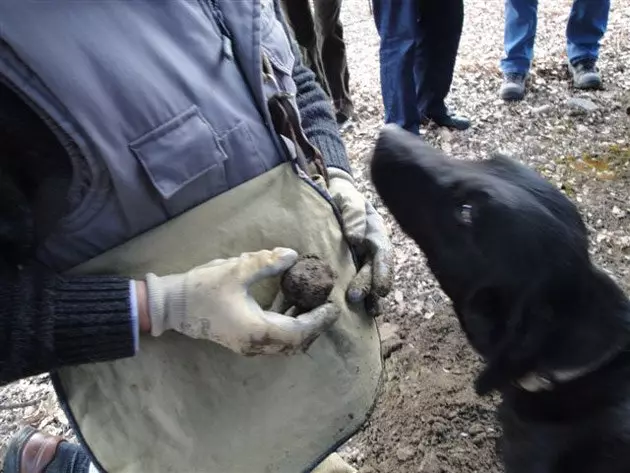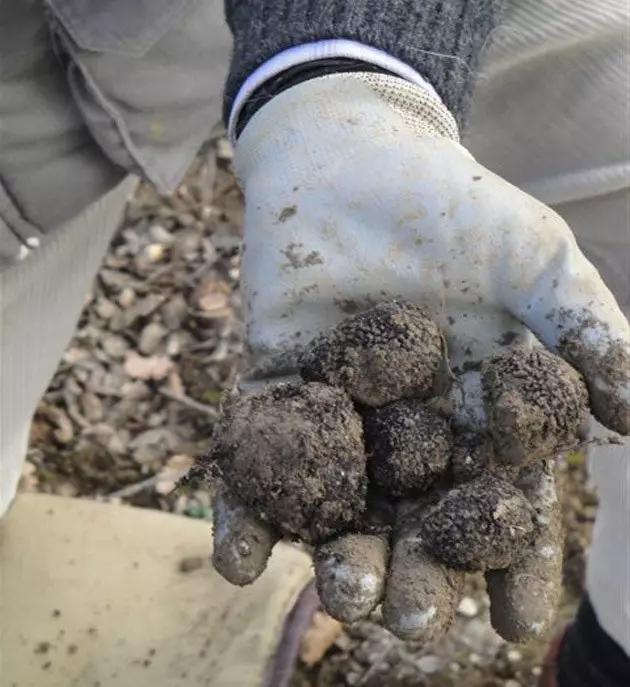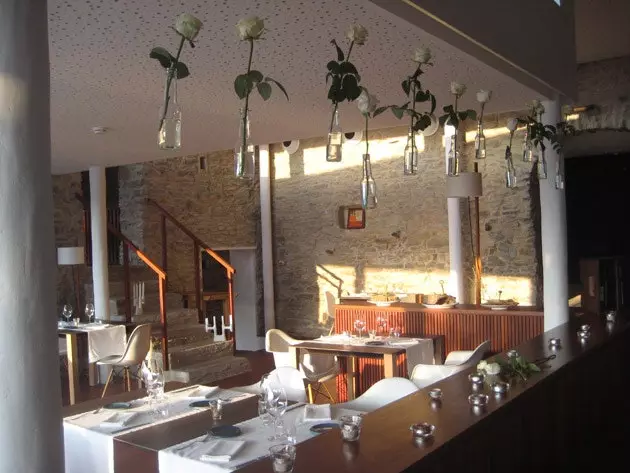
Truffle farmer in action
Black, amorphous and, at first sight, unappetizing: the truffle is an obscure object of desire that has populated the fantasies of gourmets since Brillant Savarin (French gastronome) said that so corny that it was "the black diamond of the kitchen". ”. If we did a survey more than one would not know what they are, and would probably confuse them with their much more popular chocolate replicas.
In Spain, Tuber melanosporum has not traditionally been consumed, not even in the producing areas (Huesca, Osona, Teruel and Soria). It was with the economic boom when they began to become fashionable, especially in the big cities. Until then, those that were collected, which were many, were sent (and continue to be sent) to France. Black Périgord truffles are considered to be the best in the world, but professionals know that a good percentage arrive there from the other side of the Pyrenees.
The truffle business has always been surrounded by mystery. It is a clandestine world, of opaque transactions and handshakes at dusk in the wastelands , in which nobody likes to talk about quantities, so that it is not possible to calculate the money that moves around this hypogeal fungus that grows in the stony soils under the oaks, the holm oaks and the hazel trees.
Climate change is the enemy of the truffle . The few rains in autumn, the mild winters, the absence of hail at the end of August, are achieving that the figures drop alarmingly . That must be added poachers (a plague that destroys everything) and wild boar, which are true gourmets and do not leave truffles buried.
Hope is called truffle farming. The cultivated truffles (inoculated in the roots of the trees with which they live in symbiosis) of identical quality to the wild , have become an engine of social and agricultural development that is beginning to prosper in almost uninhabited areas such as Sobrarbe and Ribagorza. Trufa-Te is an itinerant fair with demonstrations in the different municipalities of Alto Huesca. This year the truffle festival will be held on February 23 in Sabiñánigo, where 5,000 servings of truffles will be distributed accompanied by Somontano wines. In Graus there has been a truffle market since 1947: now on Saturday afternoons between December 15 and March 15, truffle farmers make their merchandise (and their knowledge) available to everyone. At the same time, the bars prepare tapas and dishes with truffles.

This is how the truffles look
Among the many myths surrounding this product is its price . José Luis Aragüe, a truffle farmer, disputes this: “saffron is also expensive, but you don't need a kilo to make rice, so it's affordable. The same happens with the truffle: with one for 20 euros, well cut, the whole family eats”.
The truffle provides flavor and aroma . Its unmistakable forest aroma is the natural perfume of the earth. Combines wonderfully with mushrooms, eggs, rice, pasta , etc. "A toast with oil and truffle, like the ones sold on market days, costs no more than three euros, the same as if you put Iberian ham on it," explains Carmelo Bosque, chef at the best restaurant in Huesca, Lillas Pastia.
There is no more appetizing breakfast in this region than some fried eggs with grated black truffle on top , and that is precisely what can be ordered at the Palacio del Obispo hotel . After walking around the unique main square, buying truffled chicken and pumpkin pastry (sensational!), you can follow the “truffle route” on foot. A Nordic walking path takes us to the truffle farming research center, where they study how to improve the crop and the truffles are genetically certified. This is the only way to fight against fraud and avoid getting a "Chinese truffle" (Tuber indicum) very cheap, tasteless and odorless by Tuber melanosporum, fragrant, tasty, and more valued.
If you are lucky, it is possible that some truffle collector agrees that we accompany him on a hunt, a verb that refers to the fact of going to look for truffles. Some 1,000 hectares of cultivation are distributed throughout the region, plus the areas where truffles grow spontaneously. In total, Aragón leaves more than 60% of the production.
On the way to Sabiñánigo, beautiful valleys are crossed, such as Isábena or Fueva , swamps that dot the course of the Cinca, monasteries built in Lombard Romanesque or churches such as Santa María that barely resist the passage of time. Also truffle fields, always fenced to protect against wild boars, with the oaks arranged in rows: 4 hectares, 100 trees, about 100 kilos of truffles per season. And almost forgotten towns: El Grado, Pano, Panizo, Trocedo... Abizanda , with only 47 inhabitants, greets us with its fortified tower and a unique hotel like few others, La Demba . It is worth spending the night and enjoying its fairy-tale rooms, each one decorated by an Aragonese artist, and its cuisine. Alejandro Casado moves the landscape to the plate, proposing a menu with Cinca trout, blue duck, native mushrooms, lamb and of course, truffle.
*** You may also be interested in...**
- Go for truffles in Croatia

The Demba Hotel
